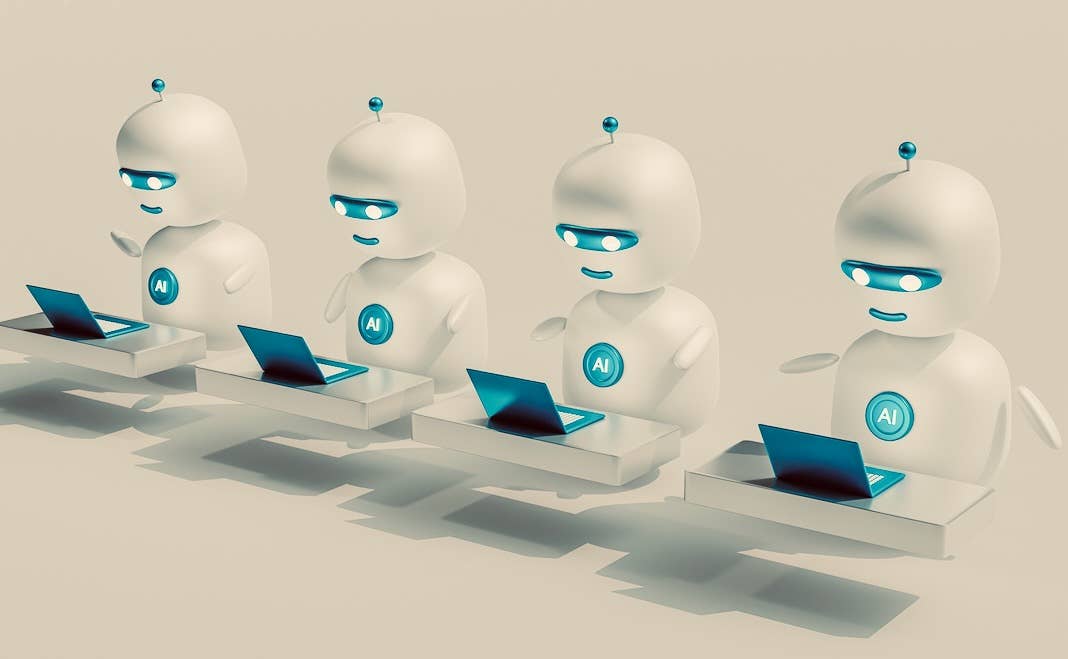IMF Says AI Will Upend Jobs and Boost Inequality. MIT CSAIL Says Not Fast.

Share
The impact that AI could have on the economy is a hot topic following rapid advances in the technology. But two recent reports present conflicting pictures of what this could mean for jobs.
Ever since a landmark 2013 study from Oxford University researchers predicted that 47 percent of US jobs were at risk of computerization, the prospect that rapidly improving AI could cause widespread unemployment has been front and center in debates around the technology.
Reports forecasting which tasks, which professions, and which countries are most at risk have been a dime a dozen. But two recent studies from prominent institutions that reach very different conclusions are worth noting.
Last week, researchers at the International Monetary Fund suggested that as many as 40 percent of jobs worldwide could be impacted by AI, and the technology will most likely worsen inequality. But today, a study from MIT CSAIL noted that just because AI can do a job doesn’t mean it makes economic sense, and therefore, the rollout is likely to be slower than many expect.
The IMF analysis follows a similar approach to many previous studies by examining the “AI exposure” of various jobs. This involves breaking jobs down into a bundle of tasks and assessing which ones could potentially be replaced by AI. The study goes a step further though, considering which jobs are likely to be shielded from AI’s effects. For instance, many of a judge’s tasks are likely to be automatable, but society is unlikely to be comfortable delegating this kind of job to AI.
The study found that roughly 40 percent of jobs globally are exposed to AI. But the authors predict that advanced economies could see an even greater impact, with nearly 60 percent of jobs being upended by the technology. While around half of affected jobs are likely to see AI enhance the work of humans, the other half could see AI replacing tasks, leading to lower wages and reduced hiring.
In emerging markets and low-income countries, the figures are 40 percent and 26 percent, respectively. But while that could protect them from some of the destabilizing effects on the job market, it also means these economies are less able to reap the benefits of AI, potentially leading to increasing inequality at a global scale.
Similar dynamics are likely to play out within countries as well, according to the analysis, with some able to harness AI to boost their productivity and wages while others lose out. In particular, the researchers suggest that older workers are likely to struggle to adapt to the new AI-powered economy.
While the report provides a mixture of positive and negative news, in most of the scenarios considered AI seems likely to worsen inequality, the authors say. This means that policymakers need to start planning now for the potential impact, including by beefing up social safety nets and retraining programs.
The study from MIT CSAIL paints a different picture though. The authors take issue with the standard approach of measuring AI exposure, because they say it doesn’t take account of the economic or technical feasibility of replacing tasks carried out by humans with AI.
Be Part of the Future
Sign up to receive top stories about groundbreaking technologies and visionary thinkers from SingularityHub.


They point to the hypothetical example of a bakery considering whether to invest in computer vision technology to check ingredients for quantity and spoilage. While technically feasible, this task only accounts for roughly six percent of a bakers’ duties. In a small bakery with five bakers earning a typical salary of $48,000, this could potentially save the company $14,000 per year, clearly far less than the cost of developing and deploying the technology.
That prompted them to take a more economically grounded approach to assessing AI’s potential impact on the job market. First, they carried out surveys with workers to understand what performance would be required of an AI system. They then modeled the cost of building a system that could live up to those metrics, before using this to work out whether automation would be attractive in that scenario.
They focused on computer vision, as cost models are more developed for this branch of AI. They found that the large upfront cost of deploying AI meant that only 23 percent of work supposedly “exposed” to AI would actually make sense to automate. While that’s not insignificant, they say it would translate to a much slower rollout of the technology than others have predicted, suggesting that job displacement will be gradual and easier to deal with.
Obviously, most of the focus these days is on the job destroying potential of large language models rather than computer vision systems. But despite their more general nature, the researchers say that these models will still need to be fine-tuned for specific jobs (at some expense) and so they expect the economics to be comparable.
Ultimately, who is right is hard to say right now. But it seems prudent to prepare for the worst while simultaneously trying to better understand what the true impact of this disruptive technology could be.
Image Credit: Mohamed Nohassi / Unsplash
Related Articles

Data Centers in Space: Will 2027 Really Be the Year AI Goes to Orbit?

Hugging Face Says AI Models With Reasoning Use 30x More Energy on Average

How Scientists Are Growing Computers From Human Brain Cells—and Why They Want to Keep Doing It
What we’re reading
